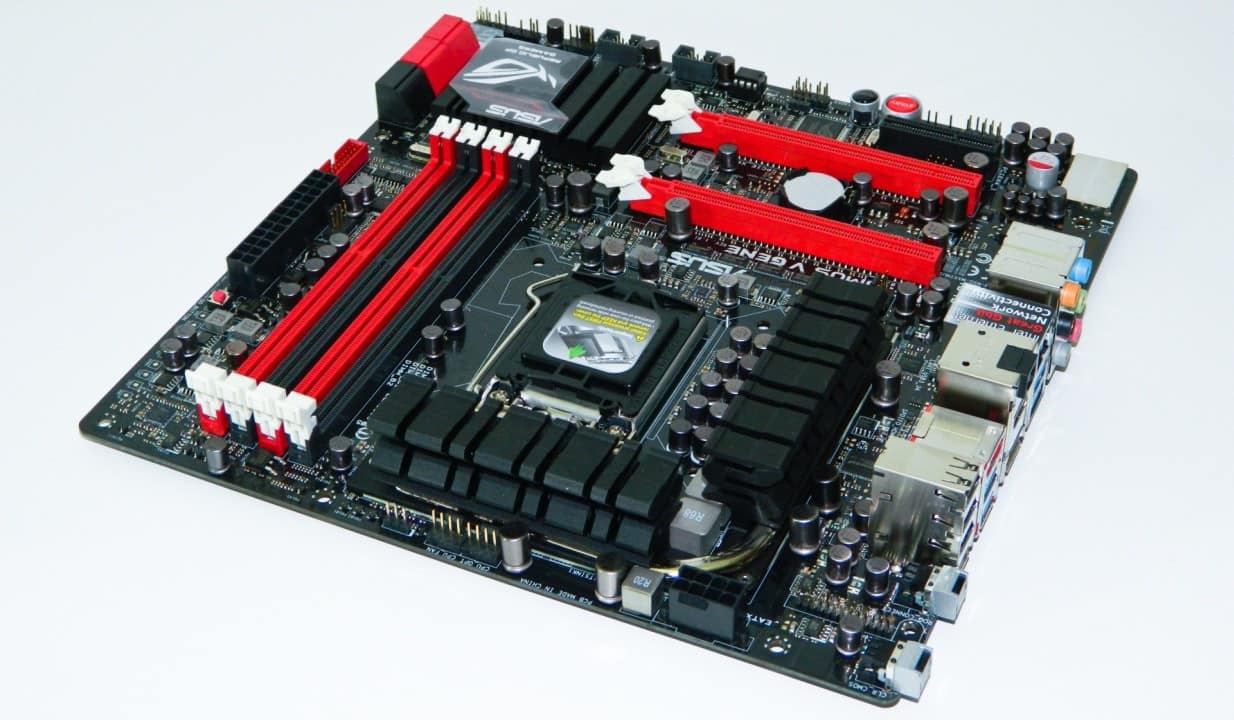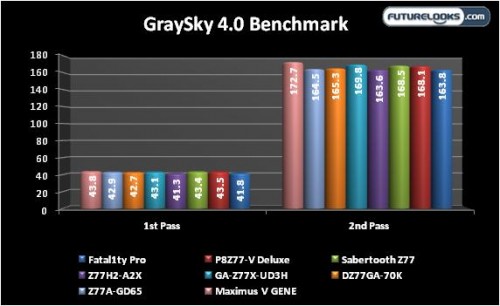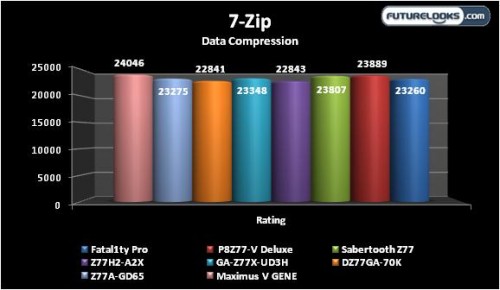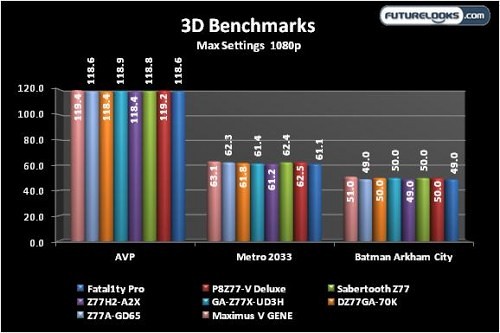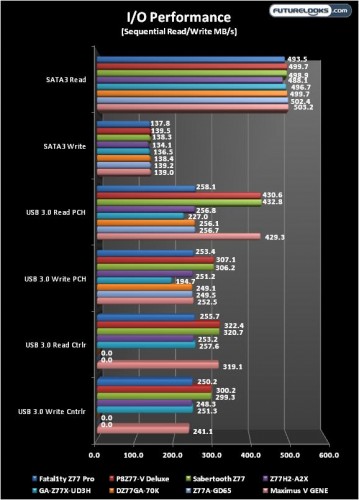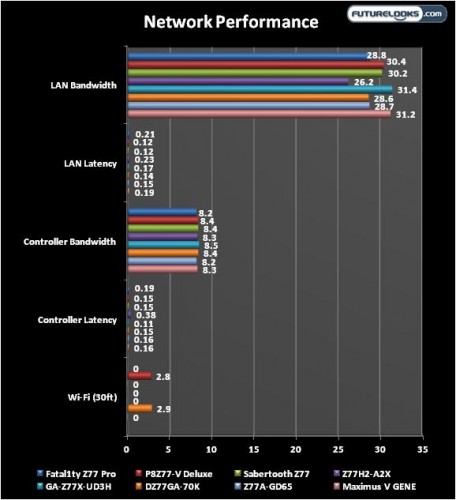CPU Benchmarks Continued
The GENE’s BIOS does well managing the communication between the memory and processor. I did notice that the CPU reached turbo frequencies a bit more quickly. In this particular case, it makes all the difference. Use a GENE for video editing? Sure, why not!
Finally, the GENE again proves a well tuned engine makes a better ride. After three passes, this was the average. Often the score would increase in to the fourth and fifth test. This wasn’t the case on all the other boards which were more consistent. I think we’ve established the GENE has great CPU support.
3D Graphics
This is a major gaming platform. I could list five to ten video games but the frame rates were all very consistently close. Frame rates were often one or two more depending on the title, so I’ve listed three DirectX11 titles (Aliens vs Predator, Metro 2033, and Batman Arkham City) that require a stable system to run properly.
As you can see, the GENE platform provided an extra frame or so giving us a little better average. Is it enough to make you dump your lack luster P67 or featureless Z77 board? Let’s look at a few more things first.
I/O Benchmarks
All of GENE’s expansion and data ports were tested as the platform offers the latest ASMedia controller that features the latest UASP multiple queue depth support which none of the other manufacturers seem to be using just yet. This mainly benefits your storage needs if you’re using multiple sessions of data at once. Additionally, it also offers USB 3.0 Boost which we saw posting strong transfer rates on the P8Z77-V Deluxe and Sabertooth Z77 reviewed earlier.
The Deluxe and Sabertooth offer the fastest transfer rates using USB Boost through the chipset ports. The GENE is only slightly slower in PCH and ASMedia read tests and much slower in write using Turbo mode. I would have expected it to be nearly the same but not the end of the world without it.
Intel LAN controllers still continue to be the best cost effective integrated choice. Any other solution tends to cost quite a bit more and require its own memory and usually, extra real estate on the PCB. The only thing I have to compare to the Gamefirst app is the G1.Killer NIC manager. The difference between the two is that Gamefirst feels a little more balanced and less buggy. The Killer manager doesn’t always do what it is told.

